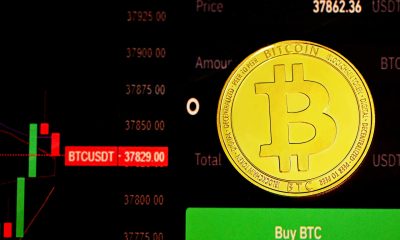Featured
Why high yield bond issuers go green
Making an ESG issue requires structuring work and sophistication (for reporting issues, in particular) which is not always easy for HY issuers, mainly because of their size but also because of the investment possibilities. This development seems to be driven by strong demand from investors, particularly in Europe, where the Sustainable Finance Disclosure Regulation (SFDR) came into force on 10 March

Nearly one-fifth of the amount issued in the euro bond market this year has been in ESG format. High yield (HY) companies, which are riskier than investment-grade companies, now want a piece of the pie. Since the beginning of the year, on the euro market alone, nearly $2.9 billion (€2.5 billion has been issued by four companies (out of $37.8 billion (€32 billion) for all HY issues): Ardagh, Public Power, Faurecia, and Via Celere. This week Novelis and Hapag Lloyd are expected to add $946 million (€800 million) to the total.
“A real green wave is sweeping through the high yield market,” said Edouard Tournier, managing director of high yield syndication and leveraged loans EMEA at BNP Paribas. Of course, there have been issues in the past, but they have been rare: Getlink and Volvo Car in 2020 and Owen Illinois in 2019 as well as Paprec. “There is always a lag time in terms of migration of new trends and practices between the investment grade and HY markets,” he continued.
Making an ESG issue requires structuring work and sophistication (for reporting issues, in particular) which is not always easy for HY issuers, mainly because of their size but also because of the investment possibilities. “Many HY issuers are now more advanced in their sustainable development strategy than they were just a few months ago,” stressed Agnès Gourc, co-head of sustainable finance at BNP Paribas.
Read more about the ESG trend and find the most important economic news in the world with the Born2Invest mobile app.
Strong demand
This development seems to be driven by strong demand from investors, particularly in Europe, where the Sustainable Finance Disclosure Regulation (SFDR) came into force on 10 March, which aims to put an end to greenwashing in the industry. “We have a strong demand from our clients that we relay to the banks in charge of issues,” said Thomas Samson, manager at Muzinich & Co. “The credit dimension remains our first investment criterion, then if the issuer proposes an ESG bond we look at its real impact and if it is sufficiently transparent.” That is the case of Novelis, whose climate impact is easily measurable, according to the manager.
The market is also developing thanks to the appearance of new formats beyond the single green bond. “The multiplication of available products, in particular, the ‘sustainability linked bond’ (whose criteria go beyond the sole environmental objectives, editor’s note) offers a wider range likely to attract new issuers”, notes Agnès Gourc. While it is easy for a large issuer with well-identified projects such as Volvo Car to issue a green bond, for others the use of performance indicators (KPIs) will be more judicious. Constellium was the first European HY issuer to issue an SLB on the dollar market on February 9. The Greek company Public Power was the first to issue this type of instrument in euros in mid-March (a more appropriate format than the green bond because of its coal-fired power generation units). The strong demand allowed it to increase the size of its issue from 500 million to 650 million. On Monday, it issued an additional 125 million on the same issue. Hapag-Lloyd has also opted for this format.
Premium to be quantified
“The diversification of formats and the strong demand from investors will further stimulate the market,” said Agnès Gourc. The incentive of private equity players, who are often the majority shareholders of HY companies, is also a driving force.
To encourage more issuers to take the complex step of structuring the issue, the quantification of a green premium (greenium) will be a real game changer. This ESG label will attract other issuers,” said Edouard Tournier. This premium exists. It manifests itself in the possibility of going after new investors, of accessing new pockets of liquidity with the rise of ESG strategies.”
However, it is still difficult to quantify it due to the lack of a sufficient number of bonds. Thomas Samson agrees to leave a little premium but only if there is a real impact and if the issuer respects its commitments. A necessary condition for the greenium to last.
__
(Featured image via Piqsels)
DISCLAIMER: This article was written by a third party contributor and does not reflect the opinion of Born2Invest, its management, staff or its associates. Please review our disclaimer for more information.
This article may include forward-looking statements. These forward-looking statements generally are identified by the words “believe,” “project,” “estimate,” “become,” “plan,” “will,” and similar expressions. These forward-looking statements involve known and unknown risks as well as uncertainties, including those discussed in the following cautionary statements and elsewhere in this article and on this site. Although the Company may believe that its expectations are based on reasonable assumptions, the actual results that the Company may achieve may differ materially from any forward-looking statements, which reflect the opinions of the management of the Company only as of the date hereof. Additionally, please make sure to read these important disclosures.
First published in L’AGEFI, a third-party contributor translated and adapted the article from the original. In case of discrepancy, the original will prevail.
Although we made reasonable efforts to provide accurate translations, some parts may be incorrect. Born2Invest assumes no responsibility for errors, omissions or ambiguities in the translations provided on this website. Any person or entity relying on translated content does so at their own risk. Born2Invest is not responsible for losses caused by such reliance on the accuracy or reliability of translated information. If you wish to report an error or inaccuracy in the translation, we encourage you to contact us.

-

 Business1 week ago
Business1 week agoDebt-Fueled Markets, Zombie Corporations, and the Coming Reckoning
-

 Impact Investing4 days ago
Impact Investing4 days agoGlobal Energy Shift: Record $2.2 Trillion Invested in Green Transition in 2024
-

 Fintech2 weeks ago
Fintech2 weeks agoPayrails Secures $32M to Streamline Global Payments
-

 Crowdfunding7 hours ago
Crowdfunding7 hours agoDolci Palmisano Issues Its First Minibond of the F&P “Rolling Short term” Program
























